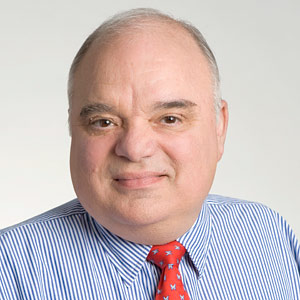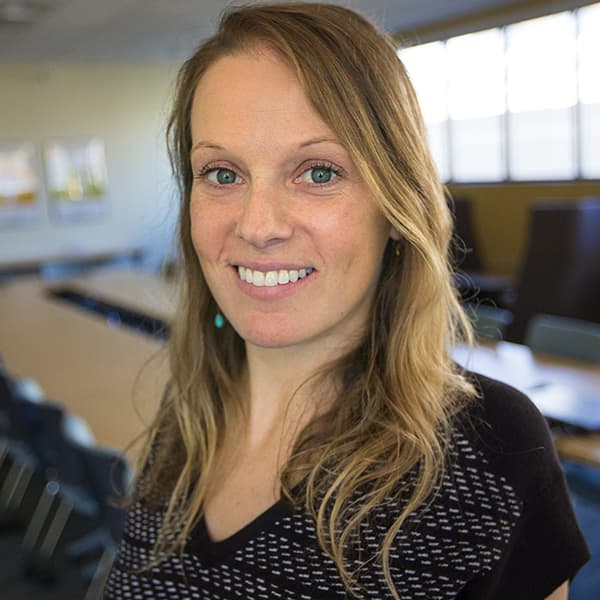Advertisement
As BRA Seeks To Extend Urban Renewal Powers, Exhibit Looks At Controversial Past
Resume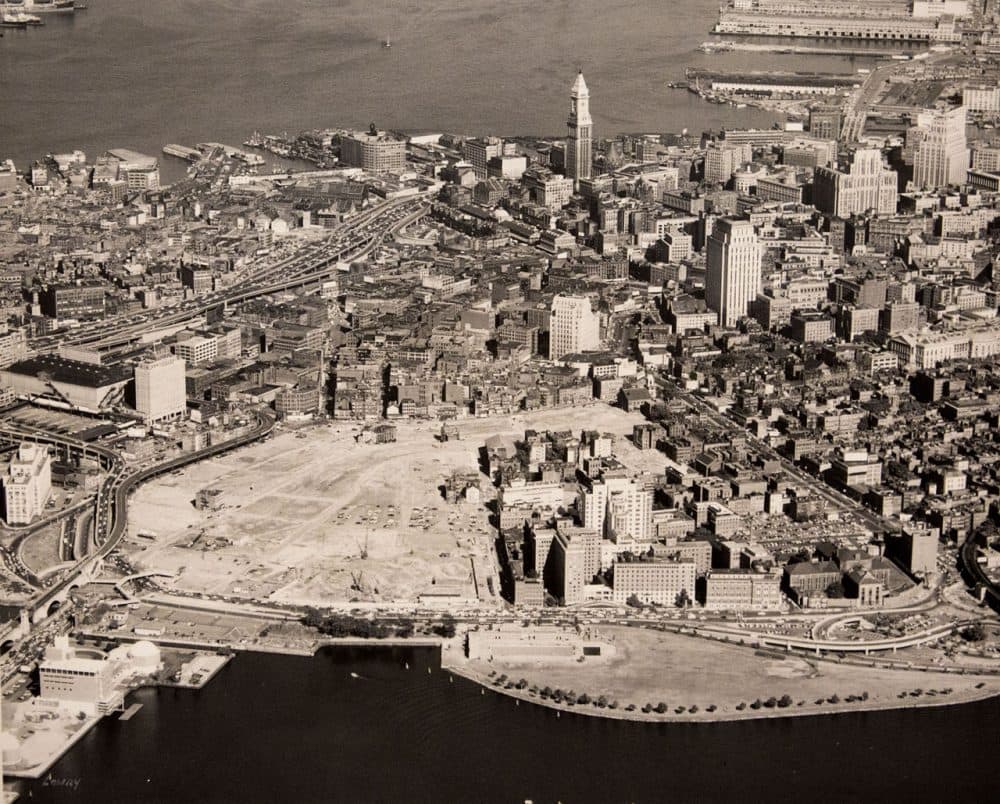
As Boston's building boom continues, its development agency wants to extend its urban renewal powers through the next decade.
The Boston Redevelopment Authority says the program "allows the BRA certain tools to catalyze development." But the BRA has a controversial history with urban renewal. In the 1950s and '60s, 41 acres of the West End were infamously razed in the name of urban renewal, having been designated blighted areas home to slums, according to the project plan.
(Another 60 acres were razed for urban renewal in the adjacent Government Center project plan.) Here's the before and after:
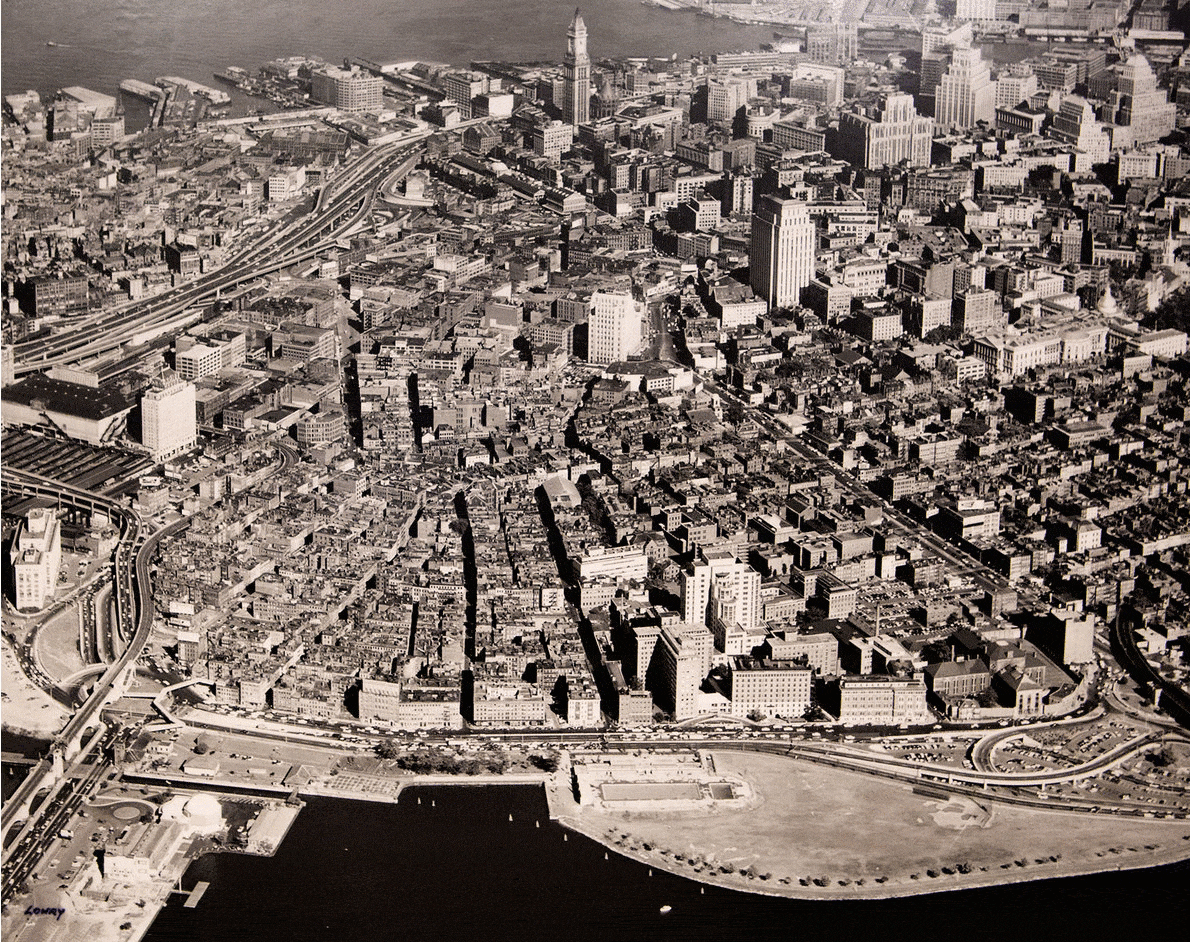
The BRA is acknowledging the controversial history with a unique new exhibit, at the West End Museum, that looks at the history — and the future — of urban renewal.
"The BRA of today in no way condones the destruction of neighborhoods and the displacement of residents that happened in urban renewal’s wake," Brian Golden, the BRA's current director, said at the exhibit's opening last month. "And I want to offer my heartfelt apology on behalf of the agency to the families of the West End that were affected."
'Something Taken Away'
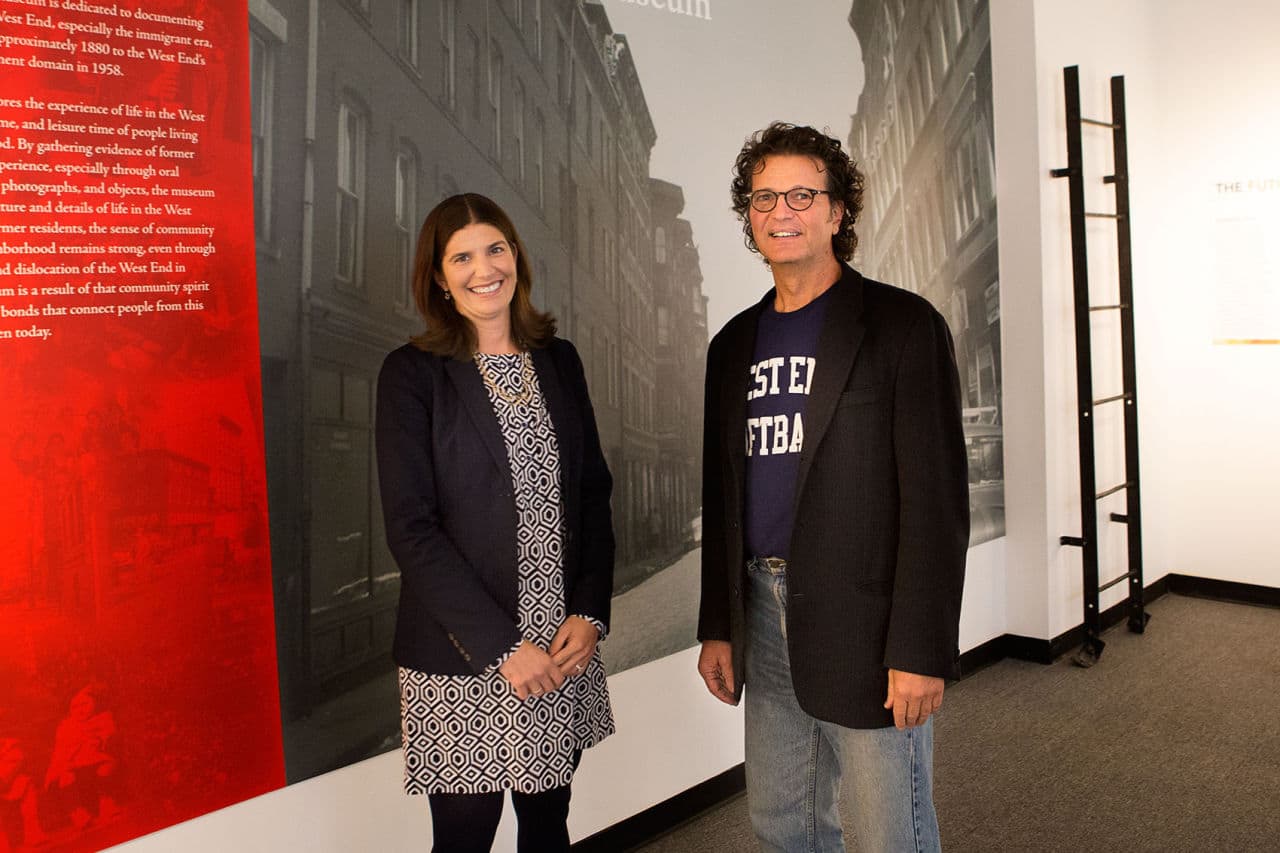
On a recent visit to the museum, curator Duane Lucia, who helped to coordinate the collaboration with the BRA, explained why the leveling of the West End community remains raw to this day.
"If you talk to old West Enders they would definitely say it wasn't a slum," Lucia said. "They felt that their neighborhood was more livable than the North End and some of the other neighborhoods that actually survived urban renewal."
He said the West End was comprised of a tight-knit and eclectic community in which everyone managed to get along. Lucia explained that the resentment harbored by some of those who were displaced stems not simply from losing their physical home, but also their sense of community.
"This was the ideal living situation for the people who were poor and working class and I think that in that regard, the ill feelings come from having something taken away, more so than being displaced," he said.
A Community 'That Is No More'
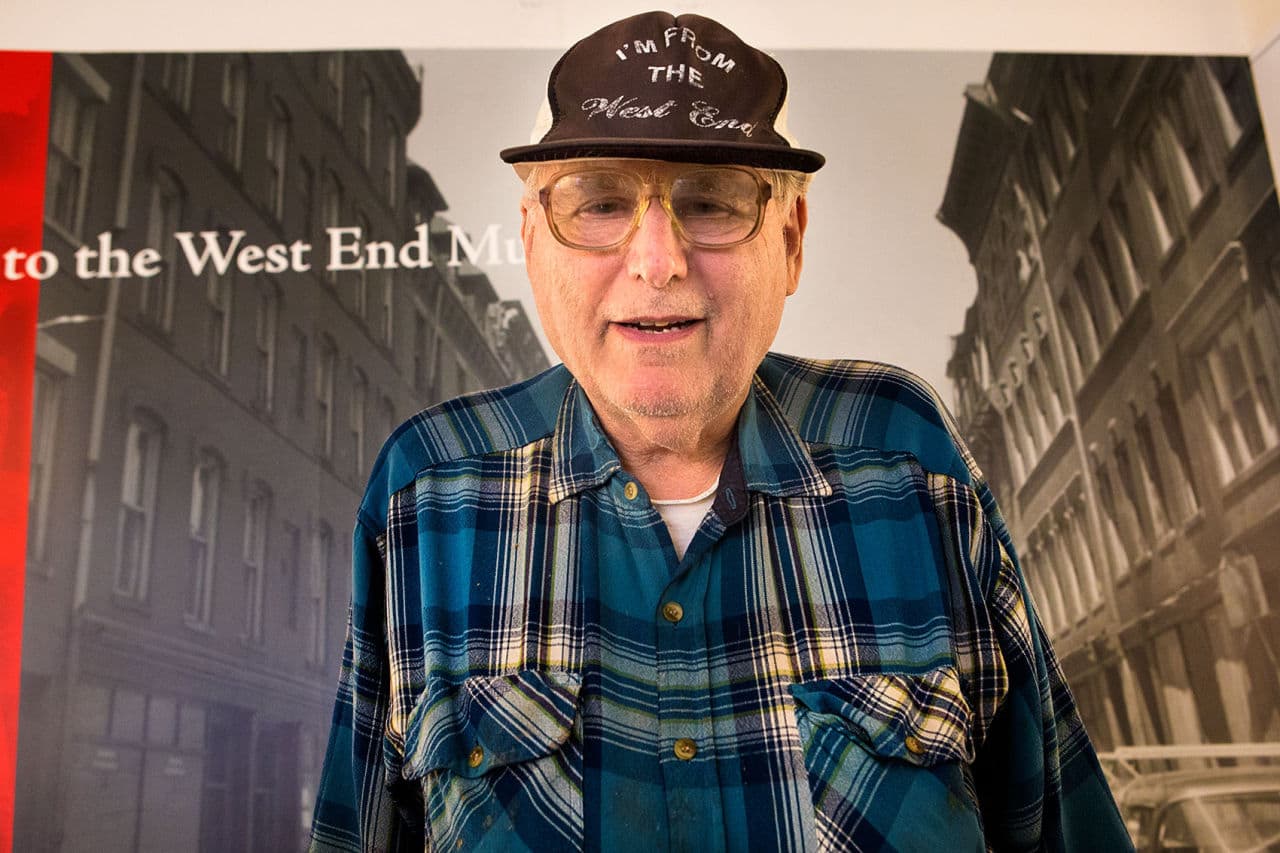
Bruce Guarino is one of those old West Enders who remembers his childhood neighborhood fondly. As if on cue, the 76-year-old walked into the museum to start his volunteer shift while we were there.
He grew up on North Grove Street, in the shadow of MGH, as he explained. He called the neighborhood home until he was 17, when his family moved to Dorchester amid the roiling debate over urban renewal.
"It was a closely knit neighborhood," Guarino recalled. "This was home to 23 different ethnic groups, it was one of the most ethnically diverse neighborhoods in the entire country."
After all these years, he said he misses the camaraderie of the old West End. "When I go down through Blossom Street, if I go down to Charles Street station to go home, I look at all of these high rise apartment buildings, I say, 'This was once a neighborhood that is no more.' "
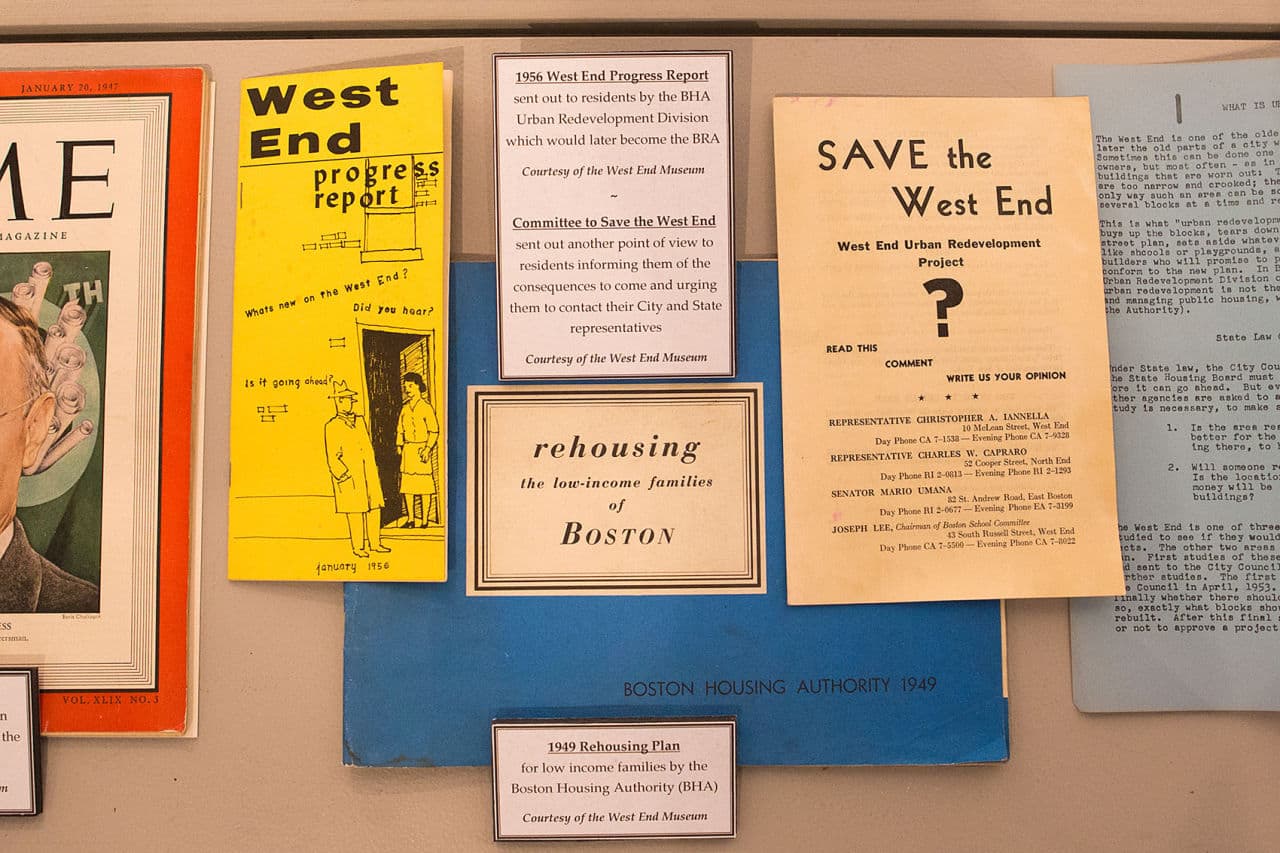
Urban Renewal 'Means Quite Another' Thing Today
Corey Zehngebot is senior urban designer and architect at the BRA. We met with her at the museum as well to talk about the BRA's vision for the use of urban renewal as a planning tool as the city continues to grow.
"What happened in the West End in 1957 is not something that could ever happen again," Zehngebot said. "The definition of urban renewal is that it's a strategy for redevelopment and revitalization, and that meant one thing in 1957 but it means quite another today. When you hear the phrase 'urban renewal' — just as when you hear the phrase 'eminent domain' or the word 'blight' -- there are strong negative connotations with that and we'd love to refresh it and call it something different, perhaps urban revitalization or, more succinctly, urban planning."
Zehngebot said these days, the BRA "absolutely" considers itself more sensitive to the need to preserve a neighborhood's feel and culture.
"The sort of core belief is that preservation is going to be key to Boston's success as a city," she said. "But we also need to look at opportunities to enhance the futures we have, and grow."
At the West End Museum, the feature exhibit is called "Dewey Defeats Truman/The Housing Act of 1949", with an accompanying exhibit from the BRA titled "The Future of Urban Renewal in Boston."
This segment aired on October 15, 2015.
